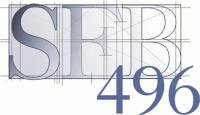|
Project A3:
Princely Entry Ceremonies and Civic Representation in the Late Medieval and Early Modern Empire
| Abstract |
Work in project A3 concentrated on the systematic collection of traditions of entry ceremonies of territorial princes within the Holy Roman Empire, in order to establish a survey of the composition of the adventus between 1300 and 1600/50, and to consolidate this survey with a comprehensive analysis of some exemplary cases (Köln, Konstanz, Halberstadt, Erfurt). These studies comprised not only the first entries of the sovereign into his city, on the instance of his coming to power, but also various visits on the occasion of feasts and tournaments as well as funeral festivities. In addition, entry ceremonies of agents and representatives of the lord of the city (such as the occupants of arch-offices in an imperial town), as well as their high-ranking guests were also studied.
|
